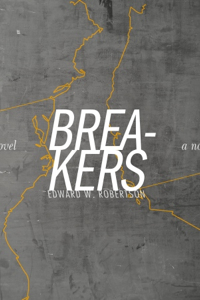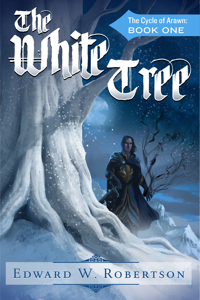As self-published authors, we don’t talk about failure enough.
Tobias Buckell recently wrote a piece about “survivorship bias” and its relation to self-publishing. He argues that the problem with self-publishing is we only hear from the winners. The survivors. When all you hear about are the successes, your view of how easy it is to succeed will be wildly distorted. His argument is based on this great article from You Are Not So Smart, which you should totally read.
Done? Yay. In response to Buckell, authors on KBoards have raised the interesting counterpoint that literally every single trad-published author is a survivor, meaning their whole perspective is skewed. Which.. is tough to argue with. On the other hand, I don’t think it nullifies his point.
A lot of people are self-publishing. Very few of them do well at it. And you almost never hear–and thus learn–from the failures.
Well, I named this blog Failure Ahoy for a reason. I think failure is awesome! Failure is what happens when you try. Fail enough, and you might even succeed. With that in mind, I’m going to post more about failure. I want to make it okay to suck. I have failed in many ways along my self-publishing journey, but there is no more stark or hilarious an illustration of that failure than my first covers. Man, I might need to brace myself here. Like with tequila.
Okay, ready if you are. Let’s dig up some corpses.
As Americans, it’s our cultural heritage to spend more money than we make. Your income may be a hard, fast number, but it’s much more of a suggestion than a limit. What I’m getting at here is unless you put yourself in debt, the massive institutions of legal usury aren’t going to be able to buy their underground city with the stoplights where the only color is gold and the streets are paved with the credit cards of starved debtors. We need that city. If Apophis blows us all to hell, it’ll be the only place we have left.
But say you’re a selfish un-team player who (unlike the world’s forward-thinking big businessmen) cares nothing for the long-term survival of humanity. Say you’re following some stupid career that makes you little to no money (actually, given that qualification, “stupid” is probably redundant). And in the most unlikely assumption of them all, say you intend to spend less than you earn.
Among the chief components of executing this America-destroying plan is to identify repeated expenses and decide if they’re necessary. If they’re not, your solution’s simple. Quit spending money on them, Monopoly Man With Your Dopey Little Monocle.
If they are necessary–and I’m using the term loosely here; I, for instance, like to own so many socks my closet looks like the corner of a cotton mill–see if you can’t minimize the expense. Shit adds up. If you buy a $3 mocha every day on your way to work, you’re dropping $60-70 a month on coffee.
Buy a $60 espresso machine. Get a thermos. Learn to make your own mochas. Reduce monthly coffee expenditures to $5 of beans and $5 of milk. Yay! You’ve still got delicious coffee and you can cut a few hours from your regular job to focus on writing/underwater basketweaving/Chewbacca sculptures etc.
But wait, there’s more. Ladies like a dynamic guy. (Men may like a dynamic partner, too, if only because a girlfriend with hobbies of her own gives us more time to work on our own ridiculous hobbies.) I think, subconsciously, women evaluate every man they meet by his capability to survive a zombie apocalypse. Looking all big and strong is the no-duh part of this, but having skill sets is an even bigger part. Knowing tae kwon do: an obvious plus. Cooking, too–the apocalypse is filled with bad meals. If you’re aware of the eldritch secrets of heat and salt, you’ll be worth your weight in shotgun shells. Even something unglamorous like knowing how to sew or change a tire is attractive.
Allow me to put this in terms we can all understand. In D&D, most of your character’s power comes from his skills. If you want to be high-leveled in real life, you need to develop skills of your own. And what is the art of concocting espresso-based drinks if not a modern form of potion brewing?
Learn to do stuff for yourself instead of buying those services from others. It’ll cut back on your day job and make you sexier. Besides, you think any of those banker fucks know how to brew their own espresso? You’re going to be in pretty high demand in the underground city.
My car’s a piece of crap, but it starts up whenever I turn the key. Most times I don’t even need to yell at it. I’ve got an old TV, a DVD player, a Wii, and this laptop. I have a nice coat I bought a couple years ago and a small collection of signed books. Other than that, the most expensive thing I own is probably my fishtank and its assorted apparati–and it’s a freshwater ten gallon.
I think I can count on one hand the number of DVDs and CDs I’ve bought this year. I’ve got a lot of books and a small DVD library, but both these collections accumulate slowly.
I don’t not buy things for some moral or spiritual reason; if I look like a monk, it’s coincidence, not purity. I think monks go to church sometimes. They’re also not supposed to be this fond of vodka.
I’m lucky in that I seem to lack the consumer gene–it just doesn’t occur to me to buy things, although that may be a byproduct of never having money–but my amaterialism is also a product of valuing my writing career more highly than I value.. whatever it is people buy. New cars? Jeans so stiff you need pliers to get into them? TVs so huge they could double as a supporting wall? (Okay, now that one I do want.) Every hour I spend at work piling up fat stacks is one less hour I have to devote to honing my skillz. One hour further away from living as a professional in the field I want to work in.
That’s the real reason I don’t buy stuff. Stuff isn’t worth it, and neither’s what I have to do to make the money I’d need to buy it. Trust me, when I have money, I’ll buy a flatscreen TV so huge I’ll have to knock down a wall to make room for the team of elephants it’ll take to deliver it. But when I buy that TV, it’ll be with money I made doing what I’ve always wanted to do.
In the meantime, I don’t need it. When you know why you don’t need it, it’s no trouble to forego.
Many people who want unorthodox careers–writers, actors, cartoonists, artists of all kinds, underwater basketweavers and snipe hunters, kung fu fighters and professional fluffers–spend their early years in careers that have nothing to do with their dream. As lawyers. Computer programmers. Salesmen.
Fuck that. I’ve wanted to be a writer since I was 12. I’m not going to wait until I’m 30 or 40 or 60 to start living like one.
At this point in time and space, we all need money. Most of us have to work for it. If you don’t, please leave your address and when you’ll next be out of the house. If you do have to work, if you have to put time in what’s known as a “real” job to support your quest for your “fake” one, take a look at how much time you’re putting into the former and how much into the latter. If the first outweighs the second, quit.
I’m not kidding. You’re making too much money. Either find more time for your fake job or cut back your real one. Your fake job won’t become a real career until you start treating it like one.
Or for a long time after that. Which is why you should get serious about it right now.
The money of a traditional career might be a safety net, but it’s not a very good one. Your corpse won’t end up any more nutritious than mine. I don’t want you standing behind a counter helping people buy slacks with someone else’s name on them. I want you lying on your floor in your pajamas sculpting Chewbaccas out of pipecleaners because that’s what you want to do with your life god damn it. So quit making money and start making pipecleaner Chewbaccas. If you try that for ten years and you’re not one step closer to making a living at it, you know what, late-stage capitalism will still be out there. They’ll still need dentists and retailers and personal trainers.
But at least you tried, and failed, to do what you really want, and probably had a lot more fun even when you were failing than you would have tallying someone else’s cash flow or selling someone else’s product.
I want to be a writer. I’m living like one before I can make a living as one. It’s pretty fucking fun. Failure ahoy.














